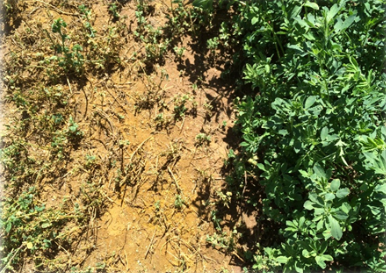Jun 11, 2014
Salt Cedar 2014
Salt cedars have shown up in fields this year that have never had them before. There are several species of salt cedar that are often lumped together. They are all in that Tamarix genus and have hybridized so it is difficult to distinguish one from another. Most fall within the scientific name Tamarix chinensis.
They were brought to the US from Asia and Europe in the early 1800s for erosion control, shade and as ornamentals. They were released by the National Arboretum
in 1870 and by 1880 they were reported here in Arizona. They are now all over the state from 6000 feet in elevation down to 100 to 200 feet in elevation here in Yuma. It is difficult to determine why they seem more widespread this year but it could be at least partially related to what has seemed like an unusually windy year. The seed is very small and easily spread by wind and water. It was reported several years ago that one plant can produce 500,000 seeds or more. Not many people have counted them and it may be only 400,000 or 100 for that matter. It is a lot and many of them germinate within 24 hours of reaching moisture.
They were brought to the US from Asia and Europe in the early 1800s for erosion control, shade and as ornamentals. They were released by the National Arboretum

Salt Cedars are trees and grow prolifically. In addition to crop competition, they secrete salt which damages surrounding plants. They are difficult to control. Once they are well-established, cultivation seems to spread rather than kill them. Most herbicides, including Glyphosate , do not control salt cedar. Currently the most effective herbicides on this weed are Triclopyr and Imazapyr. Neither, however, can be used in cropland but are used on salt cedars in non-crop areas, industrial sites and ditchbanks. Triclopyr can be used in grass pastures and rangelands. Imazapyr is a non-crop herbicide. Digging them out or spot spraying with Triclopyr can be effective.

Want to know what this is? I asked Barry on 5/10/14: Answer Here
To contact Marco Pena go to: marcop@ag.arizona.edu





